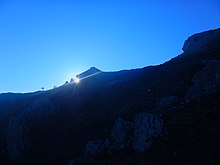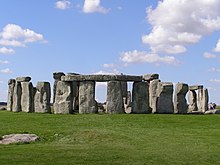If you observe the sunrise carefully enough you notice where it appears changes, with respect to a fixed background of stars, over the course of a year.
The first astronomers noted the groups of stars associated with sunrises and sunsets and started naming them; for some reason there are twelve such named groups of stars. Many stars also have a name, which I suppose gives a finer gauge than which of the twelve constellations the sun rises in.
So there is a way to tell the time of year by observing the sunrise; the sun rises and sets (so follows) along the ecliptic and the position of the earth in its orbit is determined by the fixed celestial background of stars the sun appears to be in.
The celestial sphere also moves across the sky from a fixed earth perspective; there wasn't any need early on to question the assumption of a fixed earth, it just made sense. But here's these 12 groups of bright stars also moving along the ecliptic, and there are other star groups or clusters up there.
The first astronomers noted the groups of stars associated with sunrises and sunsets and started naming them; for some reason there are twelve such named groups of stars. Many stars also have a name, which I suppose gives a finer gauge than which of the twelve constellations the sun rises in.
So there is a way to tell the time of year by observing the sunrise; the sun rises and sets (so follows) along the ecliptic and the position of the earth in its orbit is determined by the fixed celestial background of stars the sun appears to be in.
The celestial sphere also moves across the sky from a fixed earth perspective; there wasn't any need early on to question the assumption of a fixed earth, it just made sense. But here's these 12 groups of bright stars also moving along the ecliptic, and there are other star groups or clusters up there.


